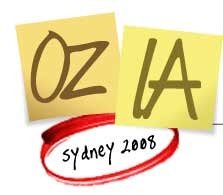Accessible forms with WCAG 2.0
Half Day Workshop, presented by Roger Hudson.
When it comes to forms, WCAG 2.0 offers considerable accessibility benefits. This workshop will outline how to make WCAG 2.0 compliant forms that are more accessible and usable for everyone.
Since 1999, the main reference point for website accessibility has been the W3C Web Content Accessibility Guidelines, Version 1.0 (WCAG 1.0). After many years of work and debate, Version 2.0 of the Guidelines is at the Candidate Draft stage in the W3C ratification process. It is likely WCAG 2.0 will become an official W3C recommendation before the end of this year.
This half-day workshop will provide practical advice about the preparation of accessible HTML forms. It compares the WCAG 1.0 accessibility requirements relating to forms with those contained in the Success Criteria of WCAG 2.0.
The workshop will describe the different ways screen readers interact with forms and highlight the importance of using the label element to explicitly associate form labels with their controls. When it comes to identifying form controls, one of the most significant advances with WCAG 2.0 is the inclusion of a Sufficient Technique that allows the form control title attribute to be used for this purpose, “when the visual design cannot accommodate the label or where it might be confusing to display a label”.
In general, WCAG 1.0 did not consider JavaScript universally accessible and so required web pages to work without JavaScript support. A significant number of online forms however now use JavaScript. Since most assistive technologies support JavaScript when it is used appropriately, and most users of these technologies access the web with browsers and devices that are JavaScript enabled, the use of JavaScript per-se is no longer likely to cause significant accessibility problems.
Since WCAG 2.0 is designed to be technology neutral none of the Success Criteria relate specifically to the use of JavaScript. However, there are Conformance Requirements that must be met. A range of accessible JavaScript techniques will be demonstrated.
The workshop will provide participants with an opportunity to hear how screen readers access and interpret forms that have been correctly marked up for accessibility.
Learning outcomes
The workshop will take a practical view of accessibility and participants will learn about:
- Screen reader virtual buffer (Read) and Form modes
- Keyboard access for forms
- Implicit and explicit association of form labels with controls
- Using the title attribute to identify a form control
- Accessible form controls without labels in data tables
- Group form elements with fieldset and legend
- Nested fieldsets, benefits and pitfalls
- Improving accessibility of forms with JavaScript
- Time limits
- Mandatory fields
Roger wishes to acknowledge the assistance of Andrew Downie, Russ Weakley and Chris Bentley in the preparation of material used in the workshop.
An overview of the difference between WCAG 1.0 and WCAG 2.0 is presented in the HTML document "Migrating from WCAG 1.0 to WCAG 2.0" on the WIPA site.
Roger Hudson

As an accessibility specialist, Roger is familiar with the needs of people with different disabilities and how these needs can be most effectively met. He is aware of the functionality and potential of the different assistive technologies and has conducted numerous usability and accessibility studies with a wide range of web users including those with disabilities.
Roger has a detailed understanding of the W3C Web Content Accessibility Guidelines Version 1.0, which underpin the requirements for website accessibility in Australia and a number of other countries. He was an active contributor to the development of Version 2.0 of the Guidelines, which are due to be released this year. Roger is also familiar with the US Section 508 and the Internet Accessibility requirements of the Australian Bankers Association.
Roger Hudson has a Certificate IV in Workplace Training and Assessment and has presented in-house accessibility workshops for a wide range of clients including, The University of New South Wales, The Office for the Status of Women (Commonwealth), Westpac Bank, Queensland Rail and the University of Nevada, Reno.

